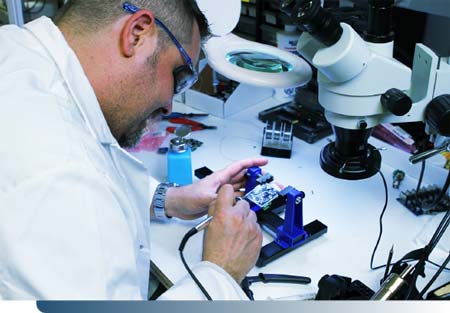If you’re a fan of science fiction, then you’re familiar with the idea of cyborgs. The merging of man and machine has given us characters as varied as the Cyberdyne systems Model 101 terminator, and classic heroes like the six million dollar man. And if you’ve been keeping an eye on the news, you’ve no doubt seen that real-world cybernetics are making big strides as well.
One prediction that’s been made is that cybernetic augmentation won’t just be out of necessity, in the future. Instead, it will be something people do deliberately.
More Than Human
A cyborg is anyone whose physical functioning is either dependent on, or advanced by, a mechanical or electronic device according to Dictionary. That is a pretty broad definition, and it includes both senior citizens with pacemakers, as well as people with prosthetic limbs, and who wear contact lenses.
That last one might be particularly important when it comes to understanding the potential future of this aspect of the medical field. Contact lenses have been around for a long time, and the idea behind them was fairly simply in the beginning; rather than wearing corrective lenses on your face, put them directly into your eyes. However, as contact lenses became easier to make, and more reliable to use, they became more popular as cosmetic items. Whether someone would rather have blue eyes instead of green, or an actor needs to have that bright red, the-devil-is-in-me look, this simple device expanded from being something used to correct legitimate problems people experienced into something that fulfilled a very different role.
According to The Medical Futurist, cybernetics offer the same sort of potential, but to the nth degree.
As an example, imagine the not-too-distant future where we have developed working, cybernetic eyes (or at least corneas). These eyes will allow those who have been blind to gain vision, true, but they could do much more. Perfect vision on the level of a high-quality digital camera, along with the capability to zoom in from a long distance away, or even to record images and video to be seen later makes it more than just an eye; it’s a body camera straight out of a cyberpunk spy thriller. It might also have the ability to see in night vision, infrared, or other modes, as well!
If such a thing existed, who wouldn’t want to have that instead of the eyes they were born with? Especially if their vision is less than optimal, and this technology could offer them something so much better? You could extend those questions to practically every part of the human anatomy, and ask why someone wouldn’t want an upgrade. Artificial muscle fibers meant to help those with degenerative conditions could turn a healthy person into a superhero. Digital skin implants could allow someone to have a tattoo that can be changed at will.
The list of possibilities goes on and on, and it’s only limited by our own creativity.
Popularity, Cost, and Difficulty
While it’s hard to imagine people voluntarily undergoing drastic augmentation for procedures they don’t need, it isn’t tough to imagine that technology could grow so advanced that we reach a point where some implants could be done as simple, outpatient procedures. As the technology advances, and the cost comes down, things that we once considered on the cutting edge (smartphones and tablets, for example), will become more affordable and available to the wider population.
When it comes to cybernetics, that offers up all kinds of unique possibilities.
If you’re working on new and exciting advancements in medical technology we’d love to help! Get in touch with one of our product specialists today!





















